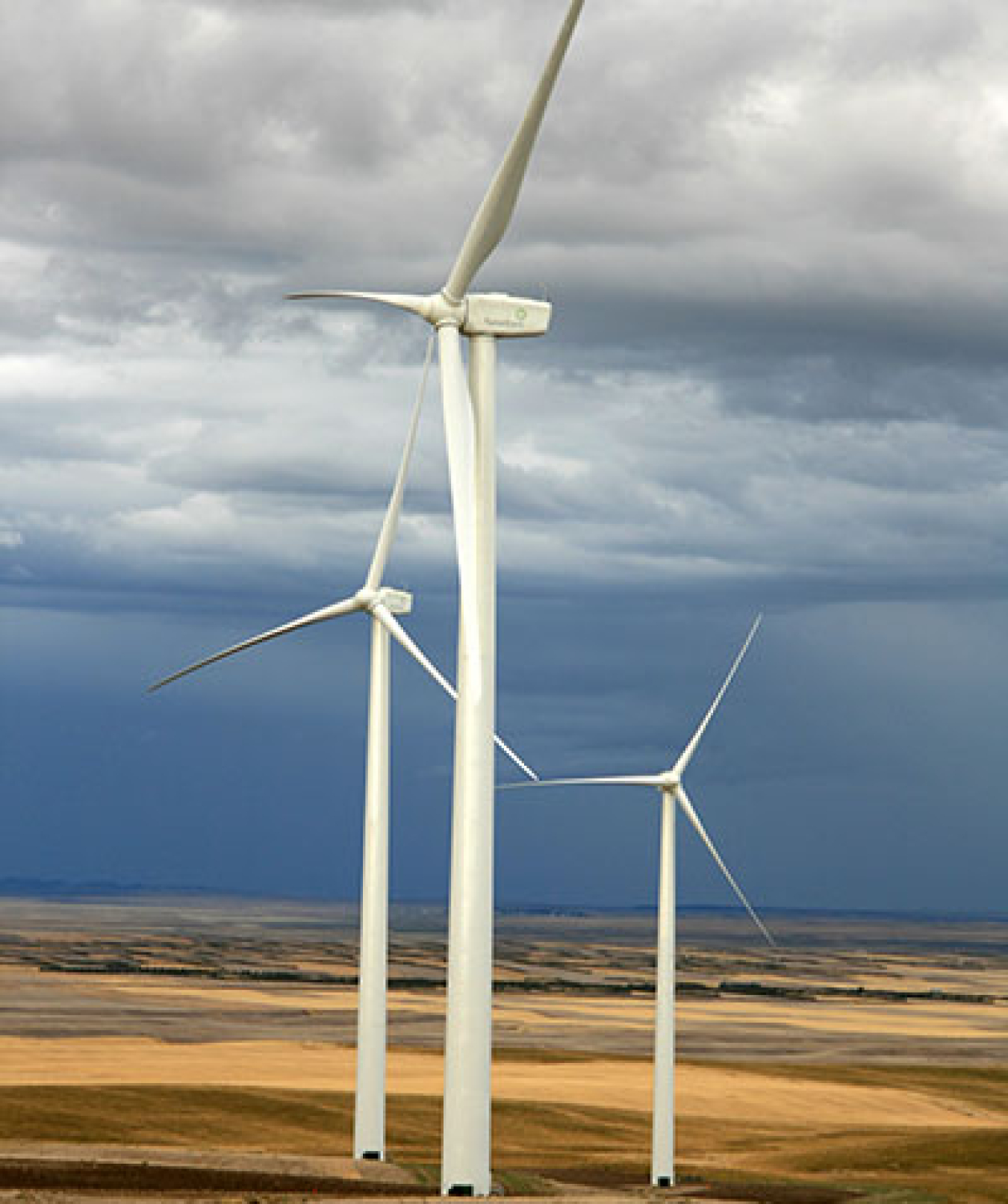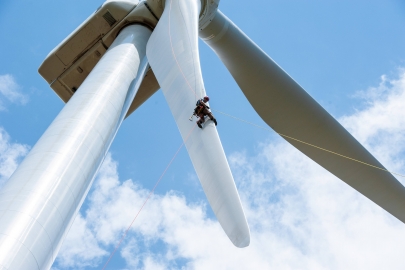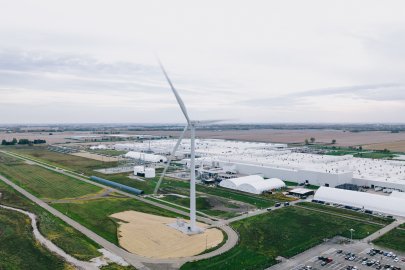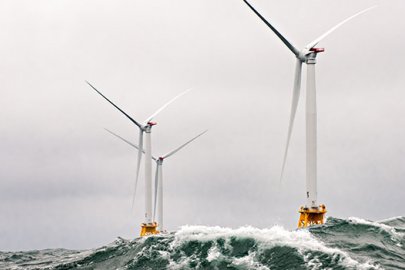Wind turbines work on a simple principle: instead of using electricity to make wind—like a fan—wind turbines use wind to make electricity. Wind turns the propeller-like blades of a turbine around a rotor, which spins a generator, which creates electricity.
Explore a Wind Turbine
To see how a wind turbine works, click on the image for a demonstration.
Wind is a form of solar energy caused by a combination of three concurrent events:
- The sun unevenly heating the atmosphere
- Irregularities of the earth's surface
- The rotation of the earth.
Wind flow patterns and speeds vary greatly across the United States and are modified by bodies of water, vegetation, and differences in terrain. Humans use this wind flow, or motion energy, for many purposes: sailing, flying a kite, and even generating electricity.
The terms "wind energy" and "wind power" both describe the process by which the wind is used to generate mechanical power or electricity. This mechanical power can be used for specific tasks (such as grinding grain or pumping water) or a generator can convert this mechanical power into electricity.
A wind turbine turns wind energy into electricity using the aerodynamic force from the rotor blades, which work like an airplane wing or helicopter rotor blade. When wind flows across the blade, the air pressure on one side of the blade decreases. The difference in air pressure across the two sides of the blade creates both lift and drag. The force of the lift is stronger than the drag and this causes the rotor to spin. The rotor connects to the generator, either directly (if it’s a direct drive turbine) or through a shaft and a series of gears (a gearbox) that speed up the rotation and allow for a physically smaller generator. This translation of aerodynamic force to rotation of a generator creates electricity.
Types of Wind Turbines
The majority of wind turbines fall into two basic types:

Dennis Schroeder | NREL 25897
Horizontal-axis wind turbines are what many people picture when thinking of wind turbines.
Most commonly, they have three blades and operate "upwind," with the turbine pivoting at the top of the tower so the blades face into the wind.

Mike vanBavel | 42795
Vertical-axis wind turbines come in several varieties, including the eggbeater-style Darrieus model, named after its French inventor.
These turbines are omnidirectional, meaning they don’t need to be adjusted to point into the wind to operate.
Wind turbines can be built on land or offshore in large bodies of water like oceans and lakes. The U.S. Department of Energy is currently funding projects to facilitate offshore wind deployment in U.S. waters.

WINDExchange
Land-based wind turbines range in size from 100 kilowatts to as large as several megawatts.
Larger wind turbines are more cost effective and are grouped together into wind plants, which provide bulk power to the electrical grid.

Dennis Schroeder | NREL 40484
Offshore wind turbines tend to be massive, and taller than the Statue of Liberty.
They do not have the same transportation challenges of land-based wind installations, as the large components can be transported on ships instead of on roads.
These turbines are able to capture powerful ocean winds and generate vast amounts of energy.
When wind turbines of any size are installed on the "customer" side of the electric meter, or are installed at or near the place where the energy they produce will be used, they're called "distributed wind.
Many turbines used in distributed applications are small wind turbines. Single small wind turbines—below 100 kilowatts—are typically used for residential, agricultural, and small commercial and industrial applications.
 Primus WindPower | 44231
Primus WindPower | 44231Small turbines can be used in hybrid energy systems with other distributed energy resources, such as microgrids powered by diesel generators, batteries, and photovoltaics.
These systems are called hybrid wind systems and are typically used in remote, off-grid locations (where a connection to the utility grid is not available) and are becoming more common in grid-connected applications for resiliency.
Learn more about distributed wind from the Distributed Wind Animation or read about what the Wind Energy Technologies Office is doing to support the deployment of distributed wind systems for homes, businesses, farms, and community wind projects.
Interested in wind energy? The Small Wind Guidebook helps homeowners, ranchers, and small businesses decide if wind energy can work for them.
More wind energy resources can be found at WINDExchange, which has lesson plans, websites, and videos for K-12 students, as well as information about the Wind for Schools Project and the Collegiate Wind Competition.
Energy 101: Generating Clean Electricity from the Wind
This video highlights the basic principles at work in wind turbines and illustrates how the various components work to capture and convert wind energy to electricity. See the text version.
-
 Through history, the use of wind power has waxed and waned,from the use of windmills in centuries past to high tech wind turbines on wind farms tod...
Through history, the use of wind power has waxed and waned,from the use of windmills in centuries past to high tech wind turbines on wind farms tod... -
 Brush up on your knowledge of wind! Get the details on a few of the lesser-known wind energy facts.
Brush up on your knowledge of wind! Get the details on a few of the lesser-known wind energy facts. -
 There are many different types of distributed wind customer. Find out more about distributed wind and who uses it.
There are many different types of distributed wind customer. Find out more about distributed wind and who uses it. -
 Learn about key facts related to wind turbines used in distributed applications.
Learn about key facts related to wind turbines used in distributed applications. -
 Learn more about efforts to develop America's vast offshore wind resources.
Learn more about efforts to develop America's vast offshore wind resources.
Find out more about wind energy by visiting the Wind Energy Technologies Office web page or browsing the office's funded activities.


